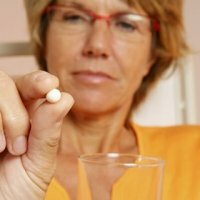Acute cystitis: what is it, causes, symptoms, treatment, prognosis
Content
- What is acute cystitis?
- Causes of Acute Cystitis
- Pathophysiology
- Symptoms of acute cystitis
- Complications
- Diagnostics
- Treatment of acute cystitis
- Prophylaxis
- Forecast
What is acute cystitis?
Acute cystitis is an acute inflammation of the bladder. Acute cystitis is the most common type urinary tract infections (IMP).
The disease often affects women, especially young girls, who are sexually active. However, in addition to young girls, women who have had their last spontaneous period also are at risk of cystitis, although in this particular subgroup the incidence is significantly lower than in younger women.
Women are particularly susceptible to UTIs because of the anatomical differences from men; almost 1 in 5 women have urinary tract infection, at least once in a lifetime.
Causes of Acute Cystitis
Acute cystitis is caused by a lower urinary tract infection (LUTI). The most common pathogens (microorganisms) are:
- Escherichia coli (E. coli, responsible for up to 90% of cases of bladder infections);
- Klebsiella pneumoniae (Klebsiella pneumoniae, Friedlander's bacillus);
- Proteus spp. (gram-negative, facultatively anaerobic, rod-shaped bacteria);
- Staphylococcus saprophyticus (saprophytic staphylococcus);
- Enterococcus faecalis (fecal enterococcus);
- Candida albicans (candidiasis albicans, a diploid fungus that causes thrush);
- Caulobacter crescentus (Gram-negative bacteria that are resistant to many antibacterial drugs).
Temperature changes, exposure to cold and retention of urine are also common causes of urinary tract infections or cystitis in womenthat can occur suddenly, be acute, recurrent, or chronic.
In addition to the pathogens responsible for most cases of acute cystitis, there are other factors that increase patients' risk of contracting infections.
Catheterization in urology, it is a standard risk factor for the development of cystitis, since they constitute a fertile ground for the adhesion of pathogens. A catheter can also be a means by which bacteria initially infect a cyst.
Kidney transplant is a risk factor for urinary tract infections. Kidney transplant patients are at higher risk of contracting Corynebacterium urealyticum (bacteria that can grow and multiply in lipids) within 2 months after operations.
Read also:Colpitis (vaginitis): what is it, causes, symptoms and treatment
Pregnancy, age or congenital structural defects of the urinary tract also make a woman more susceptible to infections.
With regard to acute cystitis caused by candidiasis, risk factors are catheterization, frequent antibiotic use, and diabetes.
Pathophysiology
There are 3 pathophysiological mechanisms leading to urinary tract infections and, consequently, to acute cystitis. Pathogens can enter the cyst from the urethra following an ascending pathway, or they can enter the bladder from the perineal region. These two mechanisms are basic; the third route of infection of the bladder with bacteria is hematogenous spread. This mechanism is less common, with this spread, the infection enters the cyst through the blood.
As already mentioned, women are more likely to suffer from acute cystitis than men. This is due to the female urethra, which is shorter in length, making it easier for microorganisms to penetrate. As soon as pathogens enter the cyst and settle on the epithelial tissue, they multiply rapidly (within 2 days before the first signs appear).
Many pathogens can be potential culprits for urinary tract infections, but most often stand out gram-negative bacteria of fecal flora. In addition to being in the perineal area, which is in close proximity to urethra, these bacterial strains have certain properties that enable them to cause acute cystitis.
Symptoms of acute cystitis

Acute cystitis without further complications causes typical symptoms that can be diagnosed even without visiting a doctor. Symptoms include:
- pain in the bladder area;
- disorder of urination;
- pain while urinating;
- frequent need to urinate;
- unpleasant putrid smell of urine
- hematuria (blood in urine).
Complications are diagnosed if other signs are present, such as fever and nausea, chills, and vaginal discharge.
Important! If symptoms occur during pregnancy, respond quickly, as untreated cystitis can adversely affect pregnancy.
Complications
Most cases of acute cystitis resolve without complications if treated.
Read also:Uterine bleeding: causes, symptoms, types, first aid and treatment
A serious complication of the disease is pyelonephritis - inflammation of the kidneys and upper urinary tract, usually caused by a bacterial infection.
In its most serious form, complications can include high blood pressure (arterial hypertension) and renal failure.
Diagnostics
Acute cystitis is diagnosed primarily based on symptoms and analysis using a test strip that you can do yourself at home.
The test strip analysis is the first thing women choose to confirm suspected uncomplicated cystitis before going to the urologist and gynecologist.
Bladder infection is easy to diagnose as patients have a typical triad of signs: pain during urination, hematuria and unpleasant putrid urine smell. Test strip analysis can help diagnose acute cystitis non-invasively, quickly and safely.
Patients who do not respond to treatment, who have recurrent cystitis, or who are suspected of having complicated acute cystitis, may need additional tests to make a diagnosis.
- general Analysis of urine (OAM).
- cystoscopy: The bladder is examined with a cystoscope. The cystoscope is inserted into the bladder through the urethra;
- sometimes computed tomography (CT) or ultrasonography of the kidneys and bladder may be needed to assess the extent of infection.
Treatment of acute cystitis

Treatment of acute, uncomplicated cystitis in women of any age is usually empirical.
Cystitis resulting from bacterial infections is successfully administered with antibiotic therapy. The patient shows signs of recovery within a week of antibiotic treatment.
The length of treatment depends heavily on the severity of the symptoms, as well as on whether this is a case of recurrent infections.
Possible antibiotic choices include:
- Furadonin - the drug has an antimicrobial effect. It is used exclusively in the treatment and prevention of bacterial IMS, taken within 7 days;
- Nolitsin - a broad-spectrum antibacterial drug. It belongs to the group of fluoroquinolones.
- Furagin - the active substance of this antibiotic is a derivative of nitrofuran, taken from 7 to 10 days;
- Nitroxoline - a derivative of oxyquinoline. an antibacterial drug that is effective against most types of bacteria as well as fungi.
Read also:Menopause in women: symptoms and treatment
There are various criteria that the doctor considers before deciding on the appropriate antibacterial drug.
The drugs are selected on the basis of analyzes and studies regarding the resistance of microorganisms, cost, previous treatments, hypersensitivity to the drug, and the ability to stick to a plan treatment.
Prophylaxis

There are many warning and prevention recommendations that can significantly reduce the likelihood of developing acute cystitis in women:
- urinating before and after intercourse, and frequent urination (helps flush out bacteria);
- people undergoing chemotherapy or radiation therapy are advised to drink plenty of water;
- give up contraceptives treated with spermicide.
- after each bowel movement, the area around the vagina and anus should be cleaned appropriately. This will help prevent the spread of bacteria.
In general, patients, when they report related cystitis symptoms, treatment is prescribed antibiotics.
Antibacterial prophylaxis on a daily basis or after intercourse is also a recommendation for women experiencing recurrent urinary tract infections.
Suggested antimicrobials include Furadonin, Furadonin Avexima and Urotropin; the latter is intended for short-term preventive treatment. Consuming cranberry juice can also help, although there is no scientific research or evidence to support its benefits or effectiveness.
Forecast
With timely antibacterial treatment of acute cystitis, the prognosis is favorable. As a rule, recovery is quick and comes within a few days.
Prescription: bed rest, exclusion of certain foods (canned food, herring, cucumbers, peppers, mustard, vinegar), alcoholic beverages.
Urinary tract infection is a very painful and rather unpleasant condition for patients. If left untreated, it can be a potential cause of serious complications such as kidney failure.



